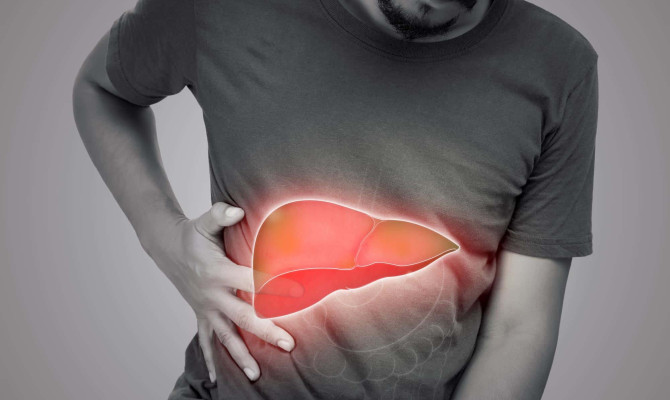Bacterial meningitis: Symptoms, Diagnosis, and Management

- Bacterial Meningitis
- 14 Aug 2023
Overview
What is Bacterial meningitis ?
The meninges, the protective membranes covering the brain and spinal cord, are the site of the severe and potentially fatal infection known as bacterial meningitis. It occurs due to bacterial invasion of the cerebrospinal fluid (CSF) that covers the brain and spinal cord.
The membranes tend to swell and strain the spinal cord or brain when they become infected. 1What is bacterial meningitis | Researched based study from Nih.gov

Prevalence
Bacterial meningitis: How common is it?
Although it is a relatively uncommon condition, bacterial meningitis can be severe and even fatal. Age, location and vaccination rates are a few variables that affect frequency.
The World Health Organization (WHO) estimates that there are 2.8 million cases and 170,000 fatalities globally yearly.
Each year, there are about 170,000 instances of bacterial meningitis, with a mortality rate of 10% even when appropriately treated.
The region of sub-Saharan Africa with the highest incidence of the illness is known as the “meningitis belt,” which stretches from Senegal to Ethiopia.
Due to the widespread use of vaccines, the prevalence of bacterial meningitis has considerably decreased in developed nations in recent years.
Causes
What are the causes?
Pneumonia Streptococcus
- In addition to being one of the most common sources of pneumonia and other infections, this is a significant contributor to bacterial meningitis in adults. It can also result in diseases like ear infections, sinus infections, and others.
Neisseria meningitides
- These bacteria can also induce sepsis and majorly cause meningitis in children and young adults.
Type B Haemophilus influenza
- The extensive use of the Hib vaccine has significantly decreased the incidence of this bacterium, which was once a significant contributor to pediatric meningitis.
Other less frequent reasons include
Monocytogenes Listeria
- This bacterium frequently causes food poisoning but can also infect new-borns, expectant mothers, and individuals with compromised immune systems, leading to meningitis.
Escherichia coli
- Although this is a typical component of the intestinal microbiota, some strains can infect new borns and young children with meningitis.3Causes | Researched based study from Cdc.gov
Streptococcus agalactiae
- In addition to significantly contributing to sepsis and pneumonia in new-borns, these bacteria frequently cause meningitis in new-borns and toddlers.
- Rarely, it can also be brought on by different kinds of bacteria, including Salmonella species, Mycobacterium tuberculosis, and Staphylococcus aureus. 1Causes | Researched based study from Nih.gov
Symptoms
What are the symptoms of Bacterial meningitis?
- Extreme temperature
- Terrible pain
- Rigid neck
- Nausea and diarrhoea
- Sensitivity to light
- Seizures
- Quickly inhaling
- Rapid heartbeat in children
- Swollen fontanelles (the soft spots on the head)
- Poor nutrition or diminished hunger
- Angry or persistent crying
- Reduction in energy or lethargy
- High-pitched cry
- Fever or coldness (low body temperature)
Within a few days or hours, symptoms can emerge and progress rapidly to a condition that threatens one’s life. If you or someone you know has any symptoms, especially if they are severe or getting worse, it is crucial to get medical help immediately. 3Symptoms | Researched based study from Cdc.gov
Diagnosis
What are the Diagnostic factors involved?
A physical evaluation and medical history
- The doctor will look for meningitis symptoms like a stiff neck, fever, and altered mental state by inquiring about the signs and performing a physical exam.
A spinal puncture
- In this process, a needle is inserted into the lower back to remove a cerebrospinal fluid (CSF) sample, which is then examined for bacteria and white blood cells, two indicators of infection.
Blood tests
- Blood tests can identify the particular bacterial strain producing infection and look for symptoms of infection and inflammation.
Imaging tests
- To look for any swelling or inflammation in the brain or nearby tissues, CT scans or MRIs may be used.
Additional tests
- Other tests, such as a throat swab to check for strep throat or blood cultures to find bacterial infection in the bloodstream, may be carried out depending on the probable reason.
Treatment
What are the treatment strategies involved?
Hospitalization and the use of antibiotics to eradicate the infection-causing bacteria are part of the therapy for bacterial meningitis.
The stages are listed here.
Hospitalization
- Typically, patients with bacterial meningitis are brought to the hospital for monitoring and care. They might need intensive treatment if their condition is severe.
Antibiotics
- The cornerstone of treatment for bacterial meningitis is intravenous antibiotics. The decision on antibiotics is based on whether a known or suspected bacterial species cause the infection.
- Ceftriaxone, vancomycin and ampicillin are examples of commonly used antibiotics.
Corticosteroids
- These medications may be administered along with antibiotics to lessen swelling and inflammation in the brain, which can help avoid consequences like hearing loss or brain damage.
- The corticosteroid most frequently used for this reason is dexamethasone. 2Treatment strategies| Researched based study from Nih.gov
Supportive care
- To control symptoms and avoid complications, additional therapies might be given. These include drugs for managing pain, seizure-prevention anticonvulsants, and oxygen treatment.
Monitoring
- Vital signs, such as blood pressure and pulse rate, and neurological status must be closely monitored in patients. Frequent laboratory studies may be carried out to keep an eye out for complications like electrolyte imbalances and kidney dysfunction. 1Treatment strategies| Researched based study from Nih.gov
Complications
Complications of Bacterial meningitis
Bacterial meningitis can result in various complications, some of which can be fatal if untreated or delayed in receiving care. Here are a few of the most typical issues.
Brain damage
- The swelling in the brain brought on by bacterial meningitis has the potential to harm or affect the brain permanently.
Hearing impairment
- An inner ear infection can cause total or partial hearing loss.
Vision problems
- Vision issues, such as double vision, impaired vision, or even blindness, can be brought on by optic nerve inflammation.
Seizures
- Bacterial meningitis has the potential to cause convulsions, which can result in rigid muscles, unconsciousness, and other symptoms. 4Complications | Researched based study from Nih.gov
Hydrocephalus
- The illness can hamper the movement of cerebrospinal fluid, which could increase pressure inside the brain. Hydrocephalus is a disease that can result in headaches, nausea, vomiting, and other symptoms.
Septicaemia
- In some instances, the bacteria can enter the bloodstream and result in sepsis, a disease that can be fatal.
Cognitive and developmental problems
- Developmental delays and cognitive impairments, such as learning difficulties, attention deficit disorder, and memory issues, can result from bacterial meningitis in children. 2Complications | Researched based study from Nih.gov
Prevention

Preventive factors
Vaccination
- Some of the most prevalent bacteria that cause meningitis have accessible vaccines. People with a high risk of infection, such as infants, children, teenagers, and college students, should get vaccinated.
Good hygiene
- Maintaining excellent hygiene can help stop the spread of bacteria that cause meningitis. This entails frequently washing your hands, keeping your mouth and nostrils covered while coughing or sneezing, and keeping a distance from sick people.
Antibiotic prophylaxis
- People in close contact with someone with meningitis may be given antibiotics to protect them from contracting the infection.
Avoiding congested areas
- Avoiding crowded areas can help lower the risk of infection, especially during an epidemic of meningitis.
A healthy way of living
- Maintaining a healthy lifestyle can help strengthen your immune system and lower your risk of infection. This includes consuming a balanced diet, sleeping well, and managing stress. 3Preventive factors | Researched based study from Cdc.gov
Prognosis
Prognosis
The patient’s age and general health, the kind of bacteria infecting them, and how soon treatment is started all affect the prognosis of bacterial meningitis.
Many people with bacterial meningitis recover completely with prompt and suitable treatment. The infection, however, can occasionally be fatal or cause life-threatening complications if it is extreme.
Here are some elements that can influence bacterial meningitis’ prognosis:
Age
- Older adults, small children, and infants are more likely to experience complications from bacterial meningitis.
Health situation
- People more vulnerable to bacterial meningitis and may have a good prognosis include those with compromised immune systems, long-term health issues, or a history of neurological illness.
Type of bacteria
- The sort of bacteria that caused the infection may also impact the prognosis. For instance, meningitis brought on by Neisseria meningitides frequently has a worse prognosis and can spread quickly.
The time for therapy
- The prognosis is improved the earlier treatment is started. Delaying medical care can make complications and mortality more likely. 4Prognosis | Researched based study from Nih.gov
Takeaway
Key Takeaways
- A severe infection of the meninges, the protective membranes surrounding the brain and spinal cord, is bacterial meningitis.
- Hospitalization and intravenous drug administration are frequently part of the treatment.
- Examples of complications include brain damage, hearing loss, eye issues, seizures, and cognitive impairments.
- Vaccination, good hygiene habits, and antibiotic prophylaxis for those in direct contact with infected people are all examples of prevention strategies.
- The prognosis can be improved with early detection and treatment.
Any feedback on this article?
 This Articles content was accurate
This Articles content was accurate Very Informative Article
Very Informative Article I have a question or a comment
I have a question or a comment
 This article contains inaccurate content
This article contains inaccurate content This article was not helpful
This article was not helpful I have a question or a comment
I have a question or a comment
We appreciate your helpful feedback!
Checkout our social pages
References
-
National Institutes of Health
Bacterial meningitis | Causes and Treatment
-
National Institutes of Health
Bacterial meningitis | Treatment | Complications
-
Centers for Disease Control and Prevention
Bacterial meningitis | causes | symptoms | prevention
-
National Institutes of Health
Bacterial meningitis | complications | prognosis.




































